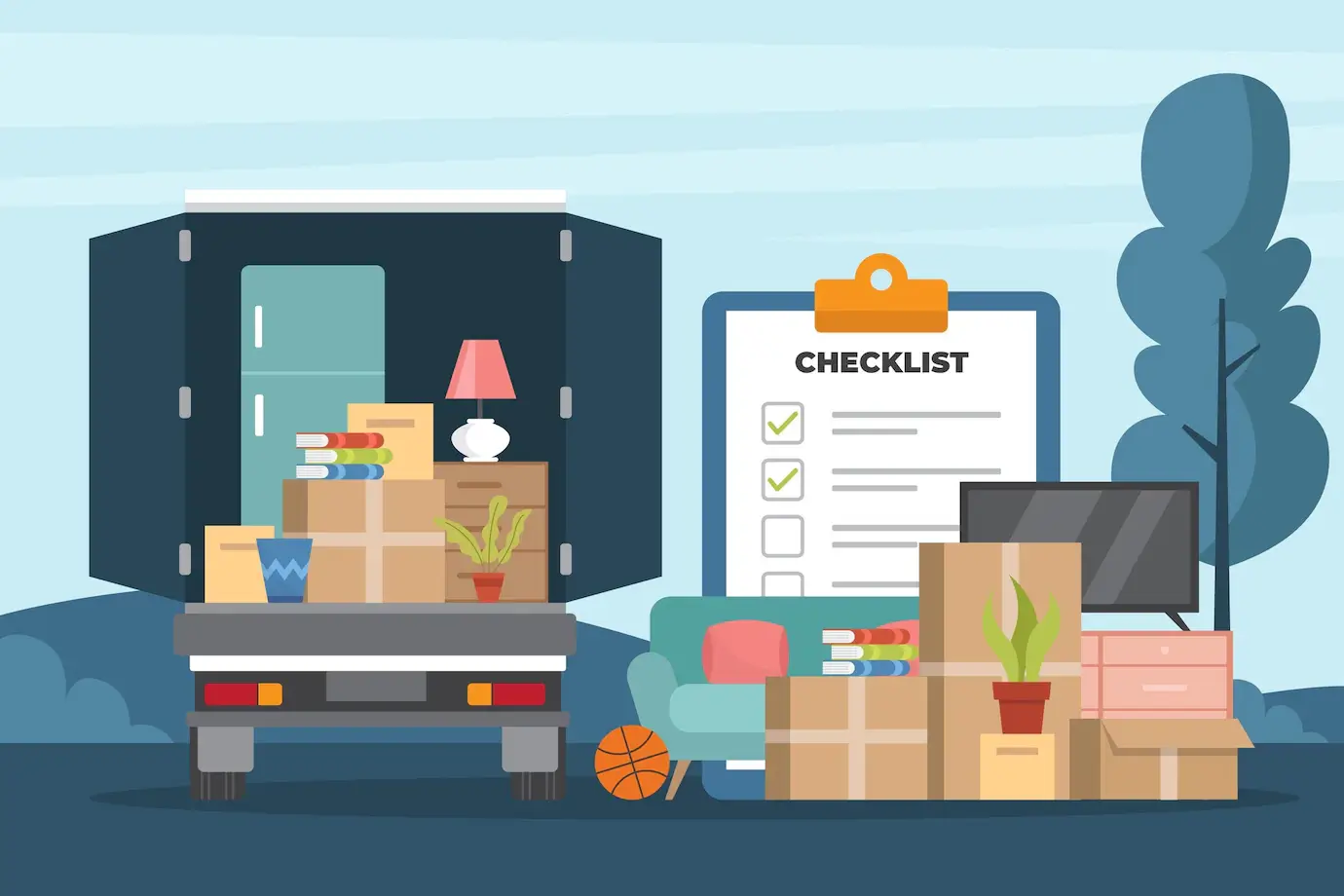Moving can be a painful, frantic experience. But after moving more than 30 times, I’m here to tell you that it can be done in a civilized way that will leave you in one piece at the end of the day. All it takes is a few pointers and you’ll be on your way.
Break your move into pieces. In other words, don’t look at it as one big overwhelming task, but rather make it a series of smaller, do-able tasks. One day you’ll gather containers or boxes. Another day, you can make the calls or write the postcards necessary to change your address. On a third day, set up all appointments related to establishing utilities at the new location. Another day, notify your present utility providers of your move-out date. By breaking a big job into lots of smaller ones, you’ll not only feel like you CAN do it, but you’ll be able to check things off at the end of the day and actually have something to feel good about.
I like having a bunch a re-usable bins, the kind you purchase from the big discount stores like Wal mart. These bins can easily be stored once the move is done. They fit inside one another and all the lids can be stacked on top of the bin stack. Twenty bins take up about as much space as a big end chair. They’re great for storing items you’re not using. I have a screened in porch that I enjoy through the warmer months. During the winter I keep my chair cushions, tablecloth, even a little outdoor lamp in a bin in my basement. They stay clean and dry, hibernating till next year. One word of caution about bins. Don’t overload load them. Remember that someone will eventually have to lift them so spread those coffee table books among your bins. They don’t all have to go in the same one!
Another great thing about bins is that they’re waterproof and won’t fall apart like boxes do. You can also use a marker to actually write on the bin. That brings us to the next pointer. All bins should be labeled with the room they are destined to go to, and can even be marked with more information like this:
KITCHEN…apple dishes, serving plates, mugs and silverware.
If the bin is used for something else during a future move, just cross out the old info and write the new. Who cares about all the scribbling? It’s just about easing your move, out of one place and into the next.
Keep all supplies related to your move in one place. All your markers, tape, bubble paper (for breakables), and tissue paper for select items,etc.should be assembled in one place. I prefer tissue paper to newspaper because the ink can get pretty messy when it’s used to wrap a beautiful white serving plate. Tissue paper comes in bulk and won’t rub off on anything. It also makes great kindling for your wood stove or outdoor fire pit and won’t give off lots of fumes when it burns.
Be sure to interview several movers. Compare apples to apples. In other words, when they call or come to your home to create their estimates, make sure that each one is basing the estimate on the same information. Ask each estimator to quote the same number of pieces of furniture, the same number of boxes, and, of course, the same distance from starting point to destination. That way, even if some aspect of the move should be altered, you’ll still have selected the moving company that gave you the best quote.
Speaking of movers, be aware that if the truck is only used for YOUR move, you’ll know its schedule and when you can expect it to arrive at your destination. At the same time, you’ll pay for that convenience. If the truck is carrying your load along with someone else’s , it should significantly reduce the cost of the move, but may delay the arrival of your possessions at the other end. No matter which way you go, know the number of bins and pieces of furniture that are being moved. Double check the mover’s list; don’t depend entirely on their paperwork. Create your own.
Get a few wardrobe boxes…those tall wide boxes that CAN be used for hanging clothes, moving them seamlessly from one closet to the next. These boxes are just great for lots of items other than clothing. Simply remove the hanging bar and stack quilts and pillows in them. They’re even good for stacking clothing that can be easily removed and put away in your new closet. Sweaters, winter jackets, boots and hats will all work just fine in a wardrobe box.
Lastly, be sure to keep several bins on the side. Use these for the last items you want to pack. That might include bedding, your alarm clock, a coffee maker, whatever you want to keep close to give you some security as your moving day approaches.
According to ourtownamerica.com, the number of people moving around our country each year is equal to 20% of the U.S.’s total population, or roughly 43 million folks on the move. The same source tells us that the average American will move 11 times in their lifetime. I beg to differ with my 30 moves under my belt, and my friends aren’t that much better! Therefore, my advice to anyone planning a move is to learn from the lessons of others about how to ease the process. If you plan ahead, it can actually be fun. Well, maybe fun is the wrong word, but it doesn’t have to leave you in tears.
